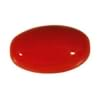Origin
Canada, Russia, Kenya, Russia, Brazil, Russia, Brazil, Russia, Brazil, Russia, Brazil, Russia, Brazil, Russia, Brazil, Russia, Norway, Brazil
Spain, Brazil, USA, Sri Lanka, Burma, Color: strongly pleochroic, reddish brown, pink / yellowish green, Hardness: 7 7.5, Refractive index: 1.63 1.65, Density: 3.13 3.21, Chemical composition: Al2SiO5, Crystal structure: orthorhombic, Lustre: vitreous, greasy, Origins: Spain, Brazil, USA, Sri Lanka, Burma. Discovered in Andalusia (Spain), the andalusite stone is relatively rare, with big crystals over 10 ct. especially rare. Due to its remarkable pleochroism effect, the stone is highly valued by collectors., brown
Color
Green, Greenish, Black, Green, Greenish, Black, Green, Greenish, Black, Reddish, Brown, Black, Green, Greenish, Black, Reddish, Brown, Black, Green, Greenish, Black, Reddish, Brown, Black
Brown, pink, Violet, Yellow, Green, White, gray, Colorless, Green, gray, Brown, Red
Streak
Yellow, Yellowish-grey, gray
White
For which Rashi?
Pisces
All
Planet
Not Available
Venus
Element of Planets
Not Available
Not Available
Energy
Not Available
Projective, Receptive
Finger
Not Available
Not Available
Ring Metal
Not Available
Not Available
Deities
Not Noted
Not Available
Not to wear with
Not Available
Not Available
Powers
Healing
Not Available
Planetary
Not Available
Not Available
Talisman
Not Available
Not Available
Tenacity
Brittle
Not Available
Solubility
Not Available
Not Available
Durability
Not Available
Not Available
Specific Gravity
3.50-3.60
3.05-3.21
Fracture
Uneven, Brittle, Metallic, Brittle, Metallic, Brittle, Metallic
Uneven, Subconchoidal, Uneven, Subconchoidal, Splintery, UnevenArthur Thomas, Gemstones (2009)
Cleavage
Good on {110}, (110) ^ (1 1 0) ≈87°; parting on {100}
Good on {110}, poor on {100}
Chemical Composition
(Na,Fe,Ca)Si 2O 6Ulrich Henn and Claudio C.
Al 2SiO 5Michael OâDonoghue , Gems, Sixth edition (2006) More from other references
Luster
Vitreous, Resinous
Vitreous, Greasy
Pleochroism
X = emerald green
strongly trichroic
Transparency
Gemmological Tables (2004) More from other references
Transparent, Translucent
Refractive Index
1.720-1.778
1.627-1.650
Optic Character
Not Available
Not Available
Crystal System
monoclinic
Orthorhombic
Birefringence
0.037-0.061
0.009-0.010
Clarity
Gemmological Tables (2004) More from other references
Transparent
Neurological
Not Available
Not Available
Cardiovascular
Not Available
Not Available
Respiratory
Not Available
Not Available
Reproductive
Not Available
Not Available
Digestive
Not Available
Not Available
Psychology
Not Available
Not Available
Healing
Not Available
Not Available
Qualities Associated
Not Available
Not Available
Aegirine Vs Andalusite Fracture
Fracture is an important parameter when you compare Aegirine and Andalusite Physical Properties. It is necessary to understand the significance of these properties, before you compare Aegirine Vs Andalusite fracture. Whenever a gemstone chip breaks, it leaves a characteristic line along its breakage. Such lines are known as fracture and are used to identify the gemstones in their initial stages of production when they are in the form of rough minerals. Fracture is usually described with the terms “fibrous” and “splintery” to denote a fracture that usually leaves elongated and sharp edges. Fracture observed in Aegirine is Uneven, Brittle, Metallic, Brittle, Metallic, Brittle and Metallic. Andalusite fracture is Uneven, Subconchoidal, Uneven, Subconchoidal, Splintery, UnevenArthur Thomas and Gemstones (2009).









